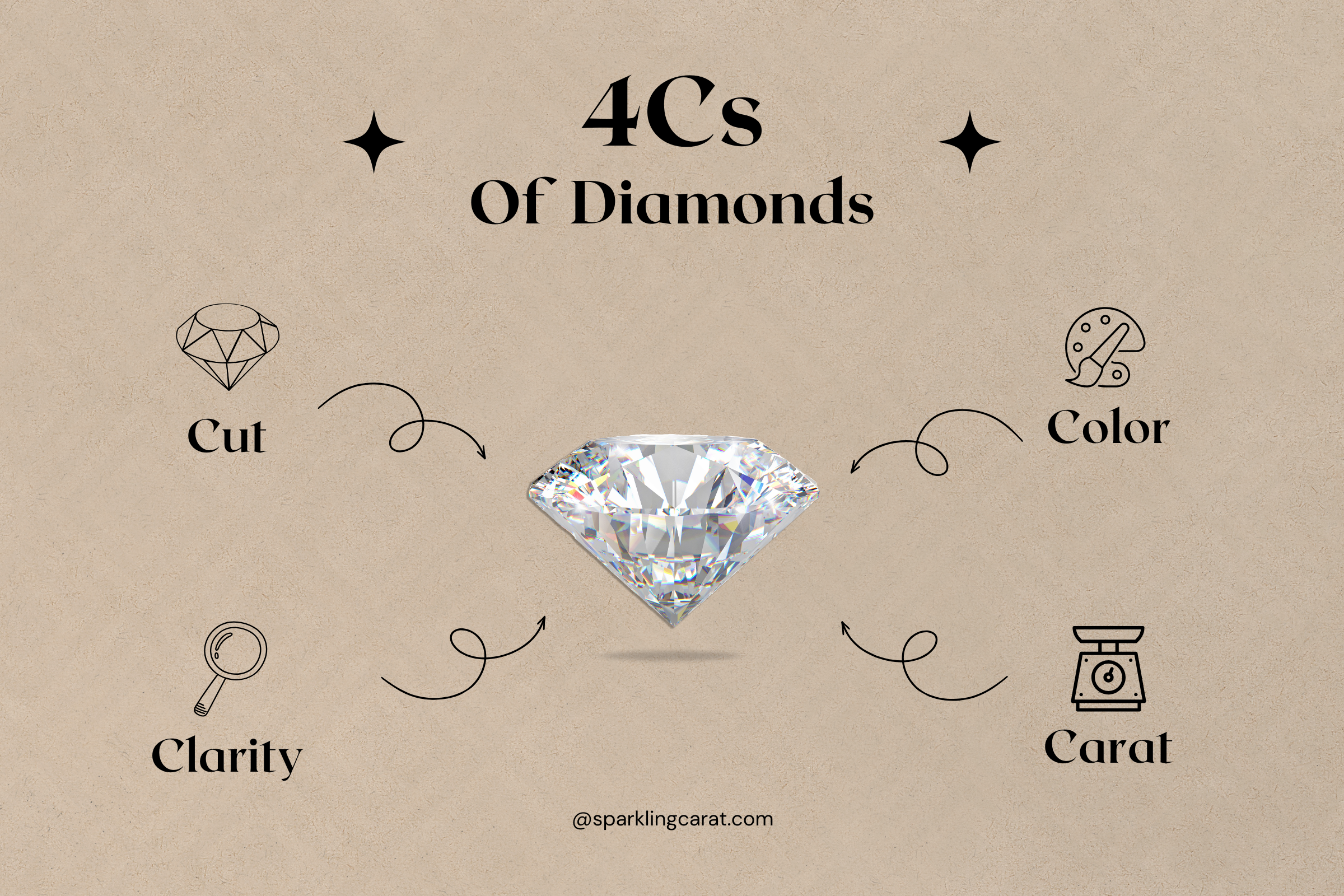Lab-Grown vs. Natural Diamonds: What’s the Difference?
In today’s diamond market, buyers are often faced with a crucial question:
Should I choose a lab-grown diamond or a natural diamond?
At Sparkling Carat, we believe in transparency, education, and helping you make informed decisions. Both lab-grown and natural diamonds offer unique benefits—and this guide will help you understand the differences, the pros and cons, and how to choose the right one for your style, values, and budget.
What Are Lab-Grown Diamonds?
Lab-grown diamonds (also known as man-made, synthetic, or cultured diamonds) are created in a controlled laboratory environment using advanced technology that replicates the natural diamond formation process.
✅ Same chemical, physical, and optical properties as natural diamonds
✅ Grown using HPHT (High Pressure High Temperature) or CVD (Chemical Vapor Deposition) methods
✅ Can be certified by leading gemological labs like GIA and IGI
What Are Natural Diamonds?
Natural diamonds are formed 1–3 billion years ago under high pressure and temperature deep within the Earth’s mantle. They are brought to the surface through volcanic eruptions and then mined.
✅ Earth-created and rare
✅ Often comes with a rich history and emotional value
✅ Require careful mining and ethical sourcing practices
Comparison Table: Lab-Grown vs. Natural Diamonds
| Feature | Lab-Grown Diamonds | Natural Diamonds |
|---|---|---|
| Origin | Grown in a lab | Formed naturally in Earth |
| Appearance | Identical to natural | Identical to lab-grown |
| Chemical Composition | Carbon | Carbon |
| Eco-Impact | Less resource-intensive | More mining impact |
| Price | ~30-40% more affordable | Higher resale value |
| Resale Value | Lower | Higher (especially rare stones) |
| Certification | GIA / IGI certified | GIA / IGI certified |
Pros & Cons of Lab-Grown Diamonds
✅ Pros:
-
More affordable than natural diamonds
-
Eco-friendly & sustainable alternative
-
Ethically produced without traditional mining
-
Visually identical to natural diamonds
❌ Cons:
-
Lower resale value
-
Some buyers may prefer the uniqueness of natural origin
Pros & Cons of Natural Diamonds
✅ Pros:
-
Higher long-term value and rarity
-
Often seen as more romantic or symbolic
-
Ideal for heirloom jewelry
-
Better resale potential
❌ Cons:
-
More expensive
-
Ethical sourcing is crucial (but Sparkling Carat only offers conflict-free diamonds)
Which One Should You Choose?
Choosing between a lab-grown and natural diamond depends on your:
-
💰 Budget – Lab-grown offers better value
-
🌱 Ethics & Sustainability – Lab-grown has less environmental impact
-
💎 Emotional Value – Natural diamonds carry geological history
-
💍 Purpose – Lab-grown is ideal for fashion jewelry, while natural may be preferred for engagement or heirloom pieces
At Sparkling Carat, we offer both lab-grown and natural diamonds, so you can make the choice that reflects your values and style.
FAQs: Lab-Grown vs. Natural Diamonds
Q1: Can you tell the difference between lab and natural diamonds with the naked eye?
No. Even experts need specialized equipment to identify them.
Q2: Are lab-grown diamonds considered "real" diamonds?
Yes! Lab diamonds have the exact same physical and chemical properties.
Q3: Will lab-grown diamonds lose value?
They typically have lower resale value, but are great for those looking for affordability and ethics.
Final Thoughts: You Can't Go Wrong
Both lab-grown and natural diamonds have their place in modern jewelry. It comes down to what matters most to you—value, sustainability, symbolism, or tradition. Whatever you choose, Sparkling Carat is here to help you shine with confidence.






Leave a comment
This site is protected by hCaptcha and the hCaptcha Privacy Policy and Terms of Service apply.